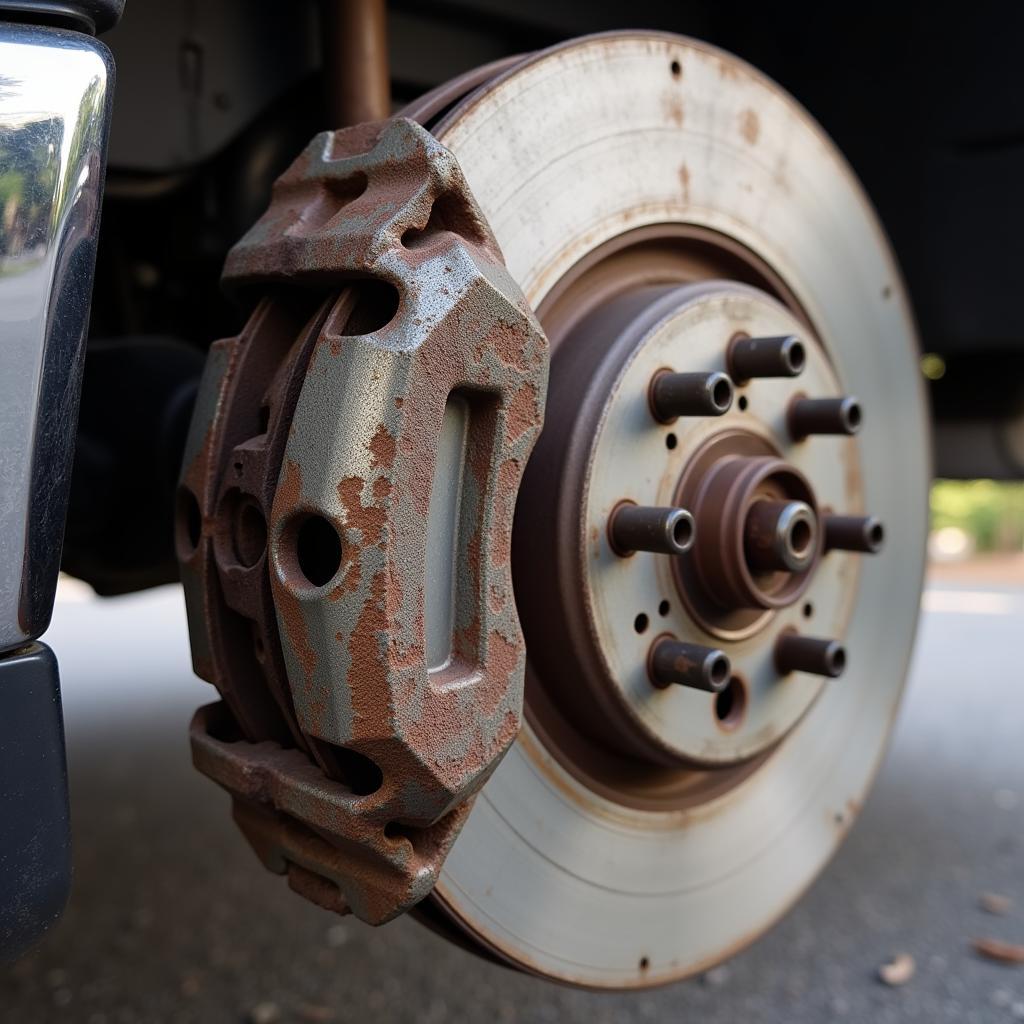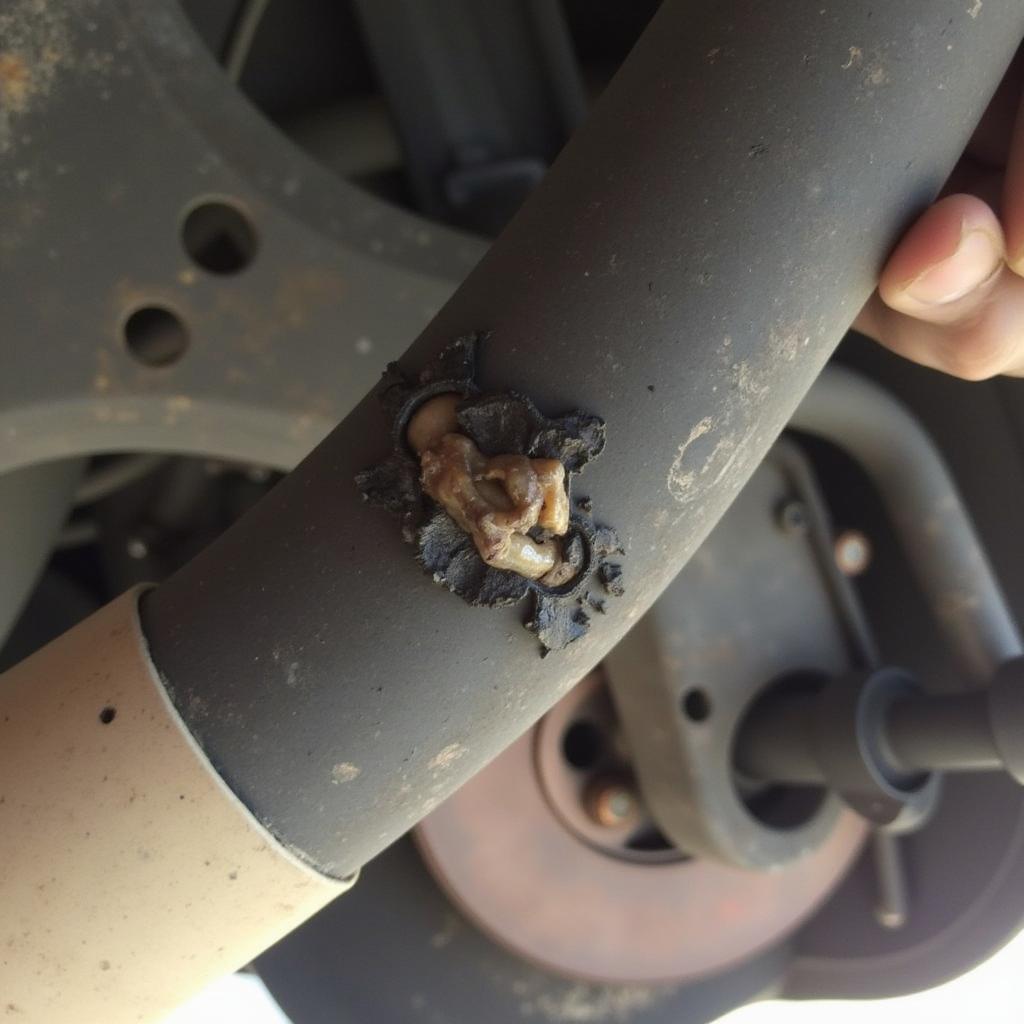A glowing brake warning light on your dashboard is never a welcome sight, especially in your trusty 2000 GMC Sierra. It’s a clear sign that something needs attention in your braking system, which is crucial for your safety and that of others on the road. While a trip to a mechanic is often the recommended course of action, understanding the potential causes can help you assess the urgency and even take some initial steps towards resolving the issue.
Common Causes of a Brake Warning Light in a 2000 GMC Sierra
Before you hit the panic button, let’s delve into the most common culprits behind a brake warning light in a 2000 GMC Sierra:
1. Low Brake Fluid
The most frequent offender is simply low brake fluid. As brake pads wear down, the brake fluid level naturally drops. If it falls below a certain point, the brake warning light will illuminate.
 Low Brake Fluid Reservoir
Low Brake Fluid Reservoir
2. Worn Brake Pads
Your Sierra’s brake pads are designed to wear down over time. When they reach a critical point, a sensor within the brake pad will trigger the warning light.
 Worn Brake Pads on a GMC Sierra
Worn Brake Pads on a GMC Sierra
3. Faulty Brake Light Switch
The brake light switch, located above the brake pedal, activates your brake lights when you press the pedal. If this switch malfunctions, it can also trigger the brake warning light.
4. ABS Issue
The Anti-lock Braking System (ABS) is a vital safety feature. If there’s an issue with the ABS module, wheel speed sensors, or related wiring, the brake warning light may come on.
5. Brake Line Leak
A leak in the brake lines can cause a sudden and dangerous drop in brake fluid pressure, illuminating the warning light.
 Brake Line Leak on a GMC Sierra
Brake Line Leak on a GMC Sierra
What to Do When Your Brake Warning Light Comes On
- Don’t Panic: While a serious issue, a glowing brake warning light doesn’t always mean imminent brake failure.
- Assess the Situation: Is the light constant or intermittent? Do you feel any changes in braking performance, like a spongy brake pedal?
- Check Brake Fluid: If comfortable, carefully inspect the brake fluid level. If it’s low, adding brake fluid might temporarily address the issue.
- Seek Professional Help: Unless you’re experienced with car maintenance, it’s always safest to have a mechanic diagnose and repair any brake system issues.
Remote Diagnostics and Software Solutions: A Modern Approach to Brake Issues
Advancements in automotive technology have paved the way for remote diagnostics and software solutions, offering a convenient and efficient way to address certain brake system issues. Here’s how it works:
-
Remote Diagnostics: Specialized software can remotely access your 2000 GMC Sierra’s onboard computer to read fault codes and identify potential problems with the ABS module, sensors, and other electronic components.
-
Software Updates and Programming: Sometimes, a simple software update or reprogramming of the ABS module can resolve glitches or improve brake system performance.
-
Benefits of Remote Solutions:
- Convenience: Diagnostics and software solutions can often be performed remotely, saving you a trip to the mechanic.
- Efficiency: Remote diagnostics can quickly pinpoint the source of the issue, leading to faster repairs.
- Cost-Effective: In some cases, addressing software-related issues remotely can be more cost-effective than traditional repairs.
Expert Insight: “Remote diagnostics and software solutions are becoming increasingly prevalent in the automotive industry,” says John Miller, Senior Automotive Engineer at Remote Auto Solutions. “They offer a powerful tool for diagnosing and resolving complex electronic issues, including those related to braking systems.”
Conclusion
A brake warning light on your 2000 GMC Sierra demands attention, but it doesn’t always signify a catastrophic problem. By understanding the potential causes and taking appropriate action, you can ensure your safety on the road. Remember, when in doubt, a qualified mechanic is your best bet for a thorough diagnosis and repair.
